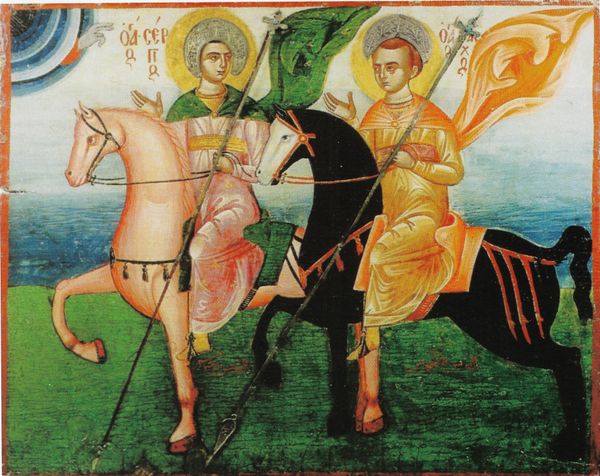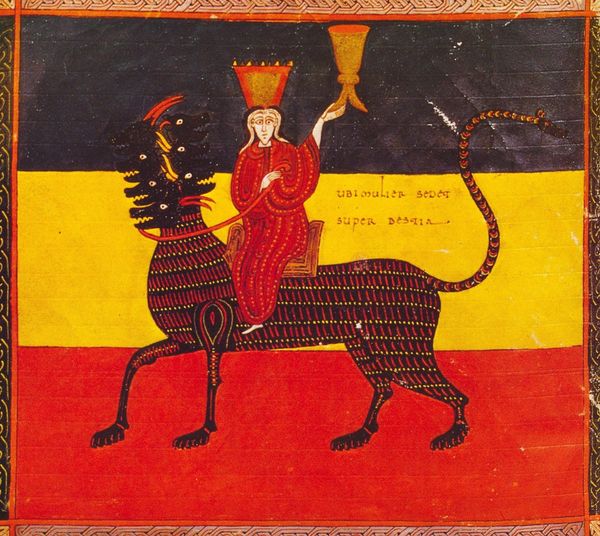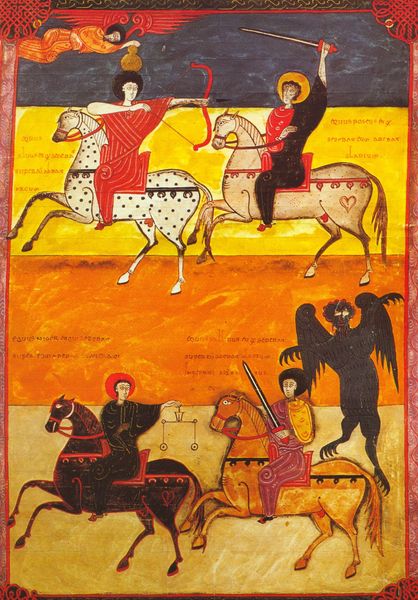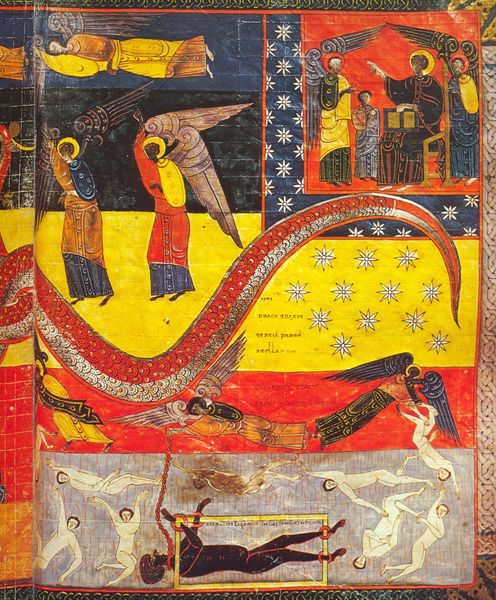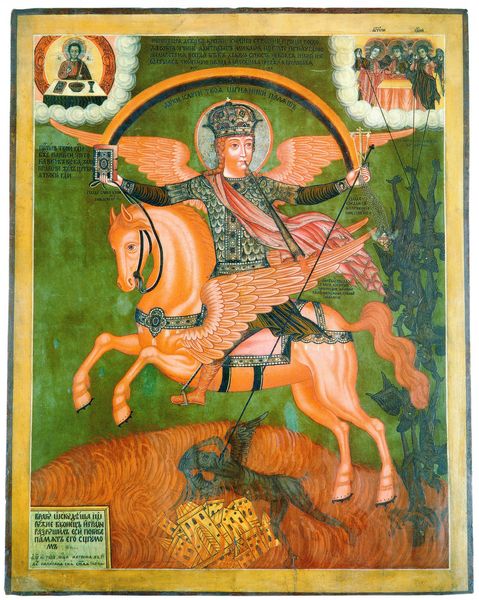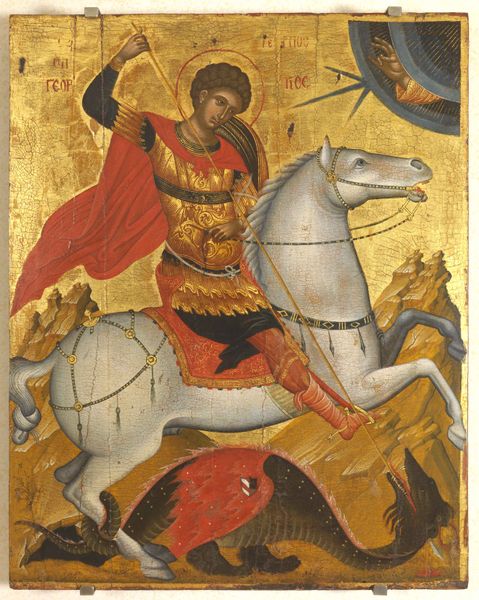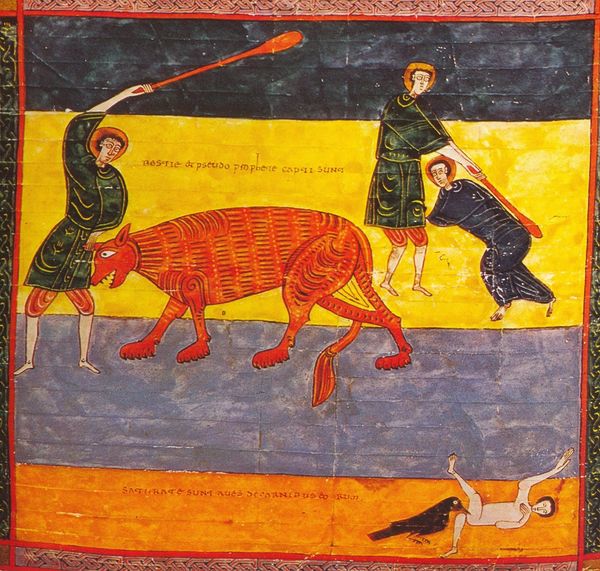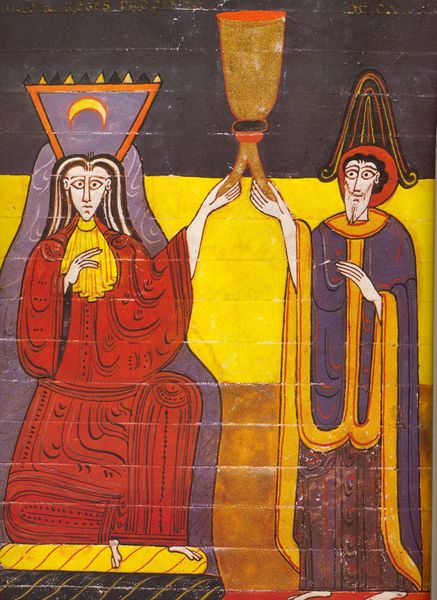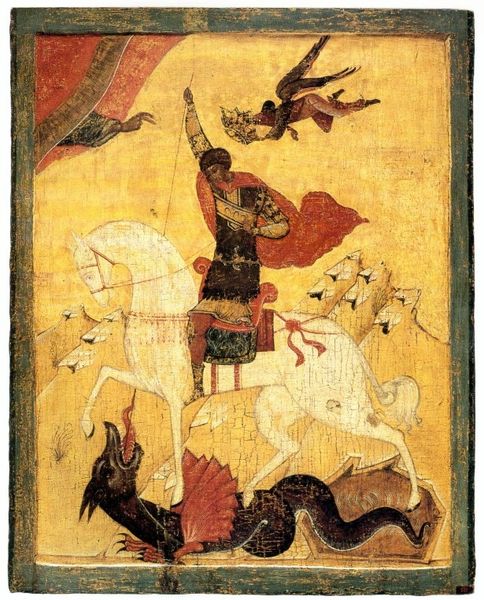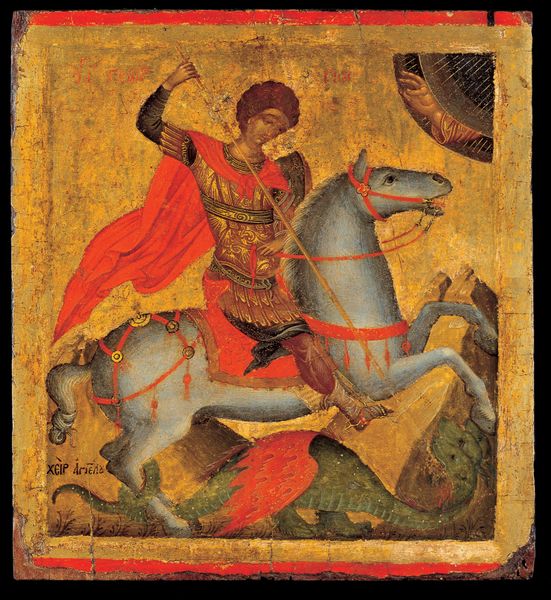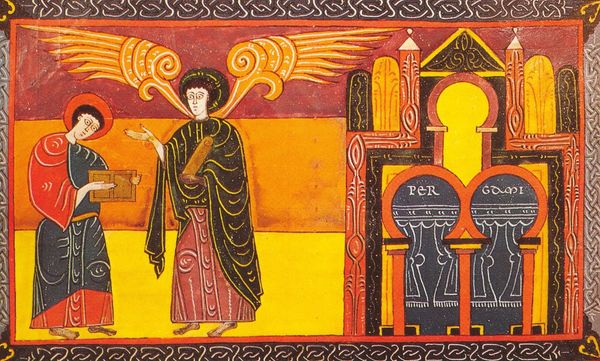
La Femme chevauche la Bête (illustration du Commentaire de beatus et non de Apoc. XVII
0:00
0:00
tempera, painting
#
medieval
#
narrative-art
#
tempera
#
painting
#
figuration
#
history-painting
Copyright: Public domain
This is "La Femme chevauche la Bête" by Facundus, an illustration made around 1050 AD. Here, a woman in red robes holds a golden cup as she rides a beast, a scene drawn from the Book of Revelation, representing the Whore of Babylon. This image pulsates with symbolic tension. The woman, adorned in scarlet, embodies both allure and corruption, while the beast, with its composite form, symbolizes the chaos and power of earthly empires. This motif of a woman dominating a beast echoes through art history, appearing in ancient Near Eastern art with goddesses atop lions, and later, in classical mythology with Europa and the bull. In each instance, the pairing embodies a primal dynamic of control and submission. Consider how the cup she holds is not merely an object, but a symbol, often associated with intoxication and false promises. The image touches upon a profound psychological chord, tapping into our collective anxieties about power, seduction, and the instability of earthly authority. This scene, laden with such symbols, continues to resonate, reminding us of the cyclical nature of history.
Comments
No comments
Be the first to comment and join the conversation on the ultimate creative platform.
